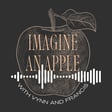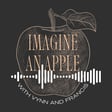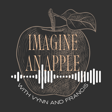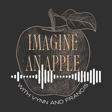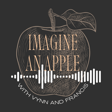
Music with cellist Matthew Pierce
What do musicians see in their mind’s eyes and ears while playing? How do they use that to create the impact of the music on the audience?
Vynn and Francis interview professional cellist Matthew Pierce who is aphantasic - he has no visual imagination. He uses his audio, spatial, emotional and bodily imagination to perform music.
Matthew goes into detail about learning to play an instrument, using different kinds of imagination to train the subconscious to control the body while playing.
How does the body move while playing a cello and a piano? Where do you need to visually pay attention while in an orchestra? What are they different layers of habit that are built up while learning an instrument?
To finish, there’s a discussion about a lack of visual imagination making it harder to do paperwork.
After this interview, Matthew composed, performed and recorded the intro and outro music for “Imagine an Apple”. Thanks Matthew, it’s very much appreciated! Check out his other musical work in the links below.
Timestamps:
01:33 Inner audio experience
04:16 Spatial imagination
05:56 Teaching playing an instrument
09:40 Body position while playing cello
11:09 Imagining what you want to play
15:11 Difference with visual imagination
16:19 Places you look while playing in orchestra
18:35 Reading music as sound vs notation
23:21 Musical keys, embodiment of playing
30:52 Imagining audio of an orchestral piece
36:15 Imagining emotions of audience
41:50 Different kinds of mind’s eyes
44:39 Paperwork when aphantasic
50:02 Vynn and Francis chat about the episode
Show Links:
- Piercello’s Progress - Matthew’s email newsletter on Substack
- Matthew’s Twitter account
- Matthew’s YouTube channel
- Prelude from J. S. Bach's Suite No. 1 for Unaccompanied Cello
Contact Details:
Please follow us, get in touch, tell us about your inner experiences!
Twitter: @imagine_apple @SurenVynn @frabcus
Email: imagine@flourish.org
Theme written, performed and recorded by @MJPiercello
